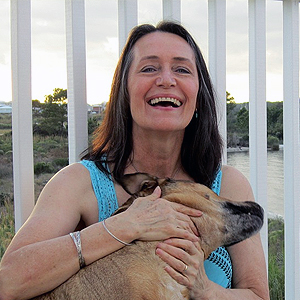Infants Have Good Outcomes Under Chiropractic According to Study
A study was published in the January 2018 issue of the Journal of Clinical Chiropractic Pediatrics showing that, according to parents assessments, chiropractic was beneficial for their infants. The study also showed that chiropractic for the infants was beneficial to the parents' overall self-health assessment.
The study begins by noting that children and infants are commonly brought to chiropractors. Over one-third (37.5 %) of children seek healthcare that falls into the category of complimentary or alternative medicine (CAM). Common in the CAM services is chiropractic or osteopathic manipulation. Some of the more common reasons that infants are brought to the chiropractor include excessive crying, feeding difficulties, infant colic and abnormal motor development.
This study is unique in that it investigated the parentsí report of their infants' care, rather than a clinical review of the results of care such as in most case reports. This study reports on parent satisfaction with care for their baby or infant, along with the parent's report of the outcome of the care rendered.
 Four
questionnaires were used in this study to assess that
parent's judgment of their child's health and the outcome of
care. Two of the questionnaires were given at the onset of
care and two were given later toward the conclusion.
The questionnaires included demographic information along
with rating the clinical experience provided.
Four
questionnaires were used in this study to assess that
parent's judgment of their child's health and the outcome of
care. Two of the questionnaires were given at the onset of
care and two were given later toward the conclusion.
The questionnaires included demographic information along
with rating the clinical experience provided.
The study parameters were very specific. "The mothers were asked to give a rating on a scale of 1 to 10 with regards to the daily amount of irritable behavior in their child, level of distress the mother feels with her childís behavior, restfulness of infant sleep during the last week and difficulty to console the child when crying."
This study looked at the survey results from 413 mothers, all with infants under the age of one who received chiropractic care. All 413 filled out the initial questionnaires and 197 filled out the second set of questionnaires at the conclusion of initial care. On the initial questionnaire, it was noted that 182, representing 50.3%, of the infant patients were four weeks of age or less. The breakdown showed that 30.2% of the infants were brought in for colic or crying, 22.9% for a feeding related complaint, 19.5% for a checkup, and 27.4% for a variety of other reasons.
The results of the study showed that in each of the categories, the infants had improved significantly according to their parents' reports. Improvement was seen in the areas of amount of irritability, restfulness of sleep, and the ease of consoling an infant who was crying. Additionally, the parents reported that their own stress levels dropped by 48% as a result of their infant receiving chiropractic care.
In their conclusion, the authors noted why infants are brought to the chiropractors by saying, "The demographic profile of infant patients presented to a chiropractic practice setting showed the two leading complaints were feeding problems and excessive crying. The complaints were often present from birth and accompanied by potential anxiety/depression levels in the mother."
As a result of the improvement in both the infants and the mothers, the researchers were able to report that the "Parents were highly satisfied with care and their expectations were met."
 In
this case, a five-month-old boy was brought by his parents
to the chiropractor. The parents reported that their baby
was exhibiting excessive and uncontrollable crying, a short
attention span, and difficulties with sleeping. They
reported that the excessive crying started immediately after
birth and would continue for at least five hours each day.
The baby boy would start inconsolable crying in the late
afternoon and it would last until around 10 p.m. at night.
In
this case, a five-month-old boy was brought by his parents
to the chiropractor. The parents reported that their baby
was exhibiting excessive and uncontrollable crying, a short
attention span, and difficulties with sleeping. They
reported that the excessive crying started immediately after
birth and would continue for at least five hours each day.
The baby boy would start inconsolable crying in the late
afternoon and it would last until around 10 p.m. at night.
 In
this case, a 57-year-old woman sought chiropractic care due to
her chief complaint of fainting. She also reported that she
was suffering with neck pain on the right side with a loss
of normal right neck rotation. She had been diagnosed by her
MD with vasovagal syncope (VVS).
In
this case, a 57-year-old woman sought chiropractic care due to
her chief complaint of fainting. She also reported that she
was suffering with neck pain on the right side with a loss
of normal right neck rotation. She had been diagnosed by her
MD with vasovagal syncope (VVS).  If
no known cause can be found for the constipation, it is
referred to as idiopathic constipation. The study describes
how this problem can be detected by noting, "Signs and
symptoms of childhood constipation include excessive
flatulence associated with a foul smell, infrequent passing
of stools, abdominal pain and withholding or straining to
stop the passage of stools.
If
no known cause can be found for the constipation, it is
referred to as idiopathic constipation. The study describes
how this problem can be detected by noting, "Signs and
symptoms of childhood constipation include excessive
flatulence associated with a foul smell, infrequent passing
of stools, abdominal pain and withholding or straining to
stop the passage of stools. Developmental
delay is measured against six areas defined by the World
Health Organization (WHO) as "windows of achievement." Each
of these have different age ranges depending on the level
advancement for the age of the child. These achievements
include sitting without support, standing with assistance,
hands-&-knees crawling, walking with assistance, standing
alone, and finally walking alone. Not being able to achieve
these tasks within the timeframe set forth in the WHO
guidelines is considered developmentally delayed.
Developmental
delay is measured against six areas defined by the World
Health Organization (WHO) as "windows of achievement." Each
of these have different age ranges depending on the level
advancement for the age of the child. These achievements
include sitting without support, standing with assistance,
hands-&-knees crawling, walking with assistance, standing
alone, and finally walking alone. Not being able to achieve
these tasks within the timeframe set forth in the WHO
guidelines is considered developmentally delayed.  The
two authors of this study consisted of a chiropractor and a
veterinarian. They began this study report by noting that
tremors and involuntary movements in canines have been
reported over the last ten years. They note that the
determination of causes and types of tremors in dogs is more
difficult than in people. There is however, a type of tremor
known as an orthostatic tremor. This type of tremor is more
common in giant breeds of dogs such as Great Danes, under
the age of two and is seen when the dog is standing.
The
two authors of this study consisted of a chiropractor and a
veterinarian. They began this study report by noting that
tremors and involuntary movements in canines have been
reported over the last ten years. They note that the
determination of causes and types of tremors in dogs is more
difficult than in people. There is however, a type of tremor
known as an orthostatic tremor. This type of tremor is more
common in giant breeds of dogs such as Great Danes, under
the age of two and is seen when the dog is standing.